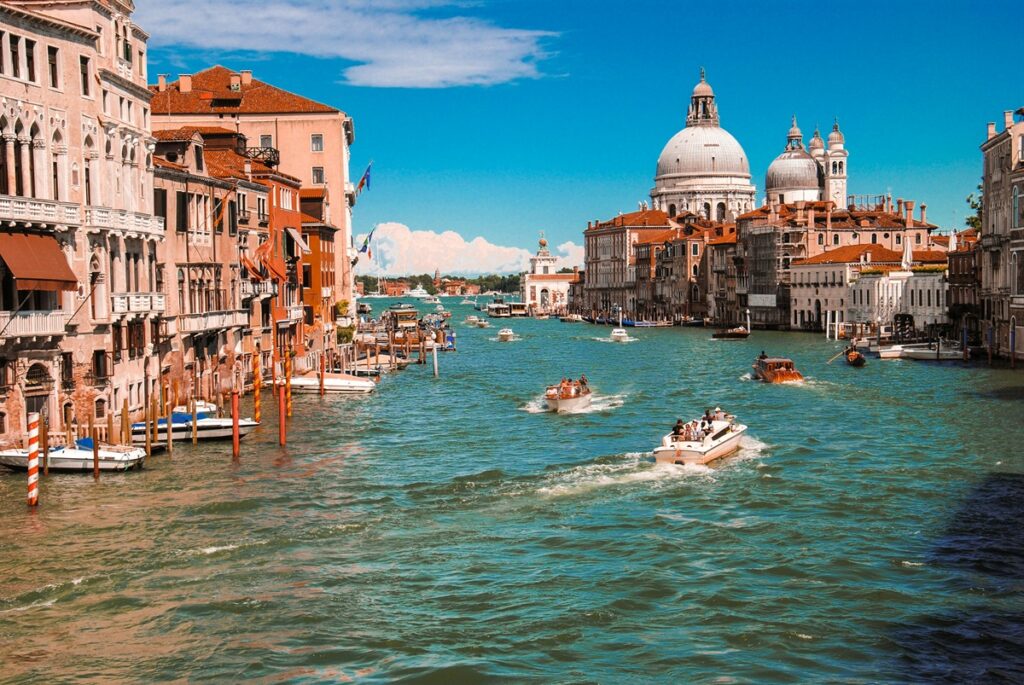Embarking on a trip to Italy is a dream come true for many travelers. From the historic streets of Rome to the romantic canals of Venice and the breathtaking landscapes of Tuscany, Italy offers a rich tapestry of culture, history, and natural beauty. To ensure a seamless and unforgettable experience, thorough preparation is key.
In this guide, we’ll take you through the essential steps to prepare for a trip to Italy.
Table of Contents
- Do I need a visa to go to Italy in 2023?
- Which countries can enter Italy without visa?
- How to plan a trip to Italy?
- How much money should you bring on a trip to Italy?
Do I need a visa to go to Italy in 2023?
As of today, December 11, 2023, you do not need a visa to travel to Italy for up to 90 days. This is because the EU’s ETIAS (European Travel Information and Authorization System) is not yet fully operational. The ETIAS visa waiver program was originally scheduled to launch in November 2023, but has been postponed until 2024.
However, even though you do not need a visa to enter Italy, you will still need to meet certain requirements, such as having a valid passport, proof of onward travel, and sufficient funds to support yourself during your stay.
Here are the requirements for entering Italy without a visa:
- Valid passport: Your passport must be valid for at least three months beyond your planned departure date from Italy.
- Proof of onward travel: You must have a valid ticket or travel itinerary that proves you are leaving Italy within the 90-day visa-free period.
- Sufficient funds: You must have sufficient funds to support yourself during your stay in Italy. This typically means having at least EUR 1,000 per person per month.
If you do not meet these requirements, you may be denied entry into Italy or required to obtain a visa.
Please note that this information is subject to change. The best way to ensure that you are up-to-date on the latest visa requirements is to check the website of the Italian embassy or consulate in your home country.
Which countries can enter Italy without visa?
Nationals of the following 63 countries can enter Italy without a visa for a maximum of 90 days within any 180-day period:
- EU member states: Austria, Belgium, Bulgaria, Croatia, Cyprus, Czech Republic, Denmark, Estonia, Finland, France, Germany, Greece, Hungary, Iceland, Ireland, Italy, Latvia, Liechtenstein, Lithuania, Luxembourg, Malta, Netherlands, Norway, Poland, Portugal, Romania, Slovakia, Slovenia, Spain, Sweden, and Switzerland.
- Other European countries: Andorra, Albania, Bosnia and Herzegovina, Monaco, Montenegro, North Macedonia, Serbia, and Ukraine.
- Other countries: Australia, Antigua and Barbuda, Argentina, Bahamas, Barbados, Brunei, Canada, Chile, Colombia, South Korea, Costa Rica, Dominica, El Salvador, United Arab Emirates, Georgia, Grenada, Guatemala, Honduras, Hong Kong SAR, Solomon Islands, Israel, Kiribati, Malaysia, Macao SAR, Moldova, Namibia, New Zealand, Palau, Panama, Paraguay, Peru, Saint Kitts and Nevis, United Kingdom, Samoa, Saint Lucia, Seychelles, Singapore, United States, St. Vincent and the Grenadines, Uruguay, and Vanuatu.
How to plan a trip to Italy?
- Research and Itinerary Planning
Start your journey by conducting thorough research on the regions you plan to visit. Italy is diverse, each city and region offering a unique charm. Create a rough itinerary, highlighting the must-visit attractions, and allowing for some flexibility.
- Travel Documents
Ensure that your passport is up-to-date and will remain so for at least six months beyond your planned departure date. If necessary, obtain a visa for your stay in Italy. Make photocopies of important documents such as your passport, travel insurance, and itinerary, and keep them in a separate place.
- Health Precautions
Consult your healthcare provider about any necessary vaccinations and carry a basic medical kit. Italy has an excellent healthcare system, but it’s always wise to be prepared. Consider purchasing travel insurance to cover unexpected medical expenses.
- Learn Basic Italian Phrases
While many Italians in tourist areas speak English, learning a few basic Italian phrases for travel can enhance your experience and show respect for the local culture. Simple greetings, thank you, and please go a long way.
- Currency and Banking
Familiarize yourself with the local currency (Euro) and notify your bank of your travel dates to avoid any issues with your credit/debit cards. It’s also advisable to have some cash on hand for small purchases and places that may not accept cards.
- Packing Essentials
Pack according to the season and region you’ll be visiting. Comfortable walking shoes, lightweight clothing, a power adapter, and a travel-sized umbrella are among the essentials. Check the weather forecast for your specific destinations.
- Cultural Etiquette
Understand and respect Italian customs and etiquette. Italians appreciate politeness and modest dress when visiting religious sites. Familiarize yourself with Italian food customs, such as not ordering a cappuccino after breakfast.
- Transportation
Research the transportation options within Italy. Whether it’s trains, buses, or rental cars, having a general idea of how you’ll move from one city to another will save you time and money. Consider purchasing a rail pass if you plan to explore multiple cities.
- Local Cuisine and Dining
Italy is a paradise for food lovers, and each region has its specialties. Research local dishes and dining etiquette to fully enjoy the culinary experience. Don’t miss the opportunity to savor authentic Italian gelato and espresso.
- Connectivity
Ensure you have a reliable way to stay connected, whether it’s through a local SIM card or an international phone plan. This will be invaluable for navigation, communication, and sharing your travel experiences.
- Safety Precautions
Italy is generally a safe destination, but it’s essential to stay vigilant. Be aware of your surroundings, secure your belongings, and avoid poorly lit or unfamiliar areas, especially at night.
- Cultural Attractions and Events
Check for any cultural events, festivals, or local holidays taking place during your visit. Participating in these activities provides a deeper understanding of the local culture and adds a unique flavor to your trip.



How much money should you bring on a trip to Italy?
Estimating the cost of a trip to Italy for a mid-range budget traveler involves considering various factors, including accommodation, meals, transportation, activities, and miscellaneous expenses. Keep in mind that costs can vary based on the specific regions you plan to visit, the time of year, and your individual preferences. Here’s a general breakdown to help you plan for a mid-range budget trip to Italy:
- Accommodation
Mid-range budget travelers often opt for a mix of affordable hotels, guesthouses, and perhaps some Airbnb accommodations. On average, you can expect to spend around €70 to €120 per night for mid-range accommodation.
- Meals and Dining
Dining costs can vary, but mid-range budget travelers can enjoy a combination of restaurant meals and more casual dining experiences. Plan to spend approximately €25 to €40 per day on meals, including breakfast, lunch, and dinner.
- Transportation
Transportation costs will depend on your itinerary. Consider using trains for intercity travel, local transportation for city exploration, and budget for occasional taxi rides. On average, transportation costs may range from €20 to €50 per day.
- Attractions and Activities
Many cities offer passes that provide access to multiple attractions at a discounted rate. Budget around €15 to €30 per day for entrance fees to museums, historical sites, and other attractions.
- Miscellaneous Expenses
Allow for miscellaneous expenses such as snacks, souvenirs, and tips. Budget an additional €10 to €20 per day for these miscellaneous costs.
- Currency Exchange and Fees
Consider currency exchange rates and fees associated with withdrawing cash or using credit cards. Budget around €5 to €10 for currency exchange fees and potential ATM fees.
- Emergency Fund
Allocate a small emergency fund for unexpected expenses or situations. Setting aside €50 to €100 for emergencies is a prudent measure.
- Travel Insurance
The cost of travel insurance can vary, but budgeting around €5 to €10 per day for insurance coverage is a reasonable estimate.
Adding up these estimated costs, a mid-range budget traveler might spend approximately €200 to €350 per day. Keep in mind that this is a general estimate, and actual expenses can vary based on individual choices and preferences.
It’s advisable to create a detailed itinerary, research specific costs in the regions you plan to visit, and adjust your budget accordingly. Additionally, consider any special activities or experiences you want to include in your trip, as these can impact your overall budget.



